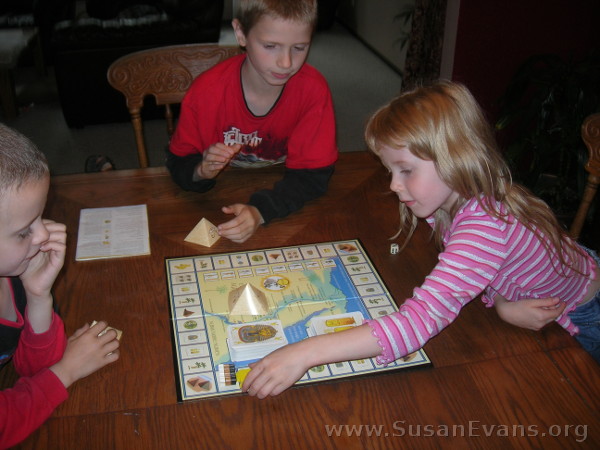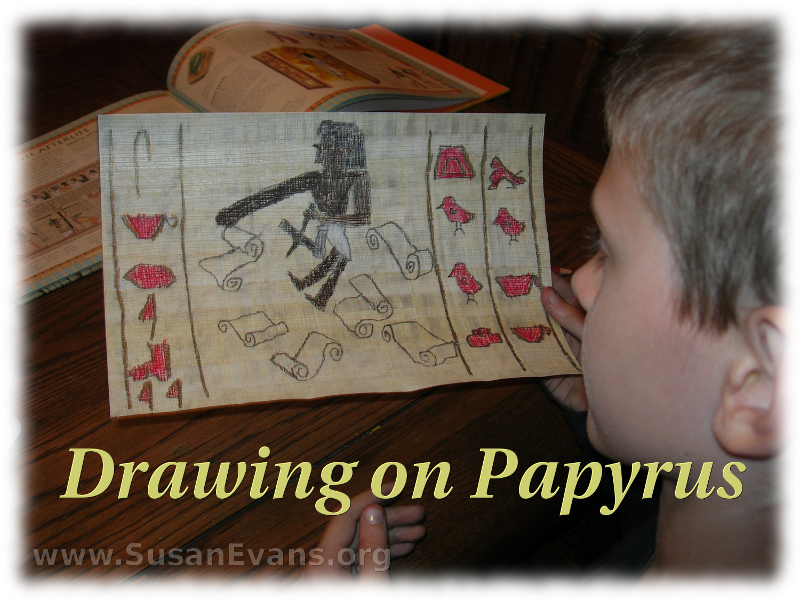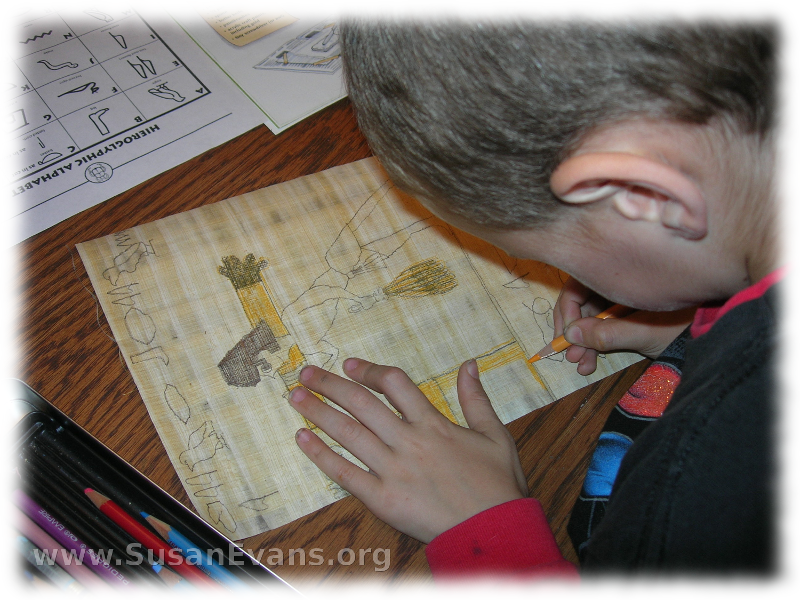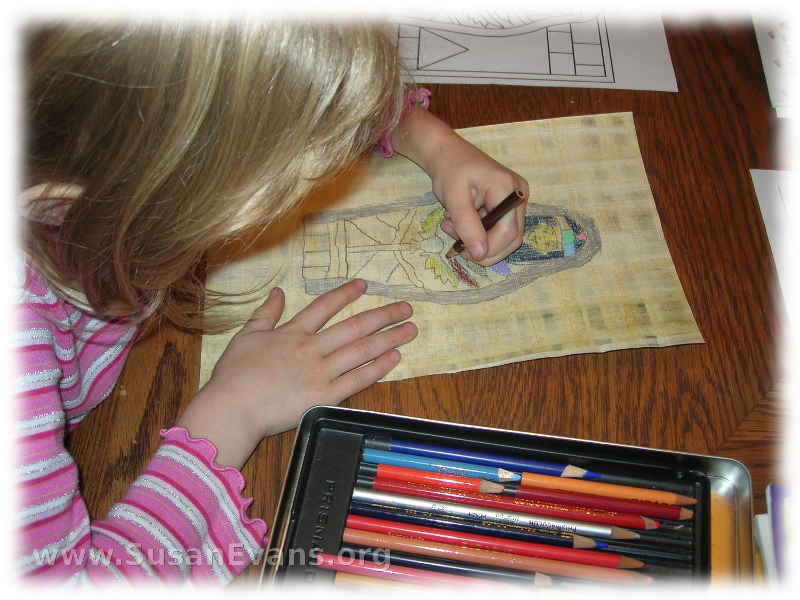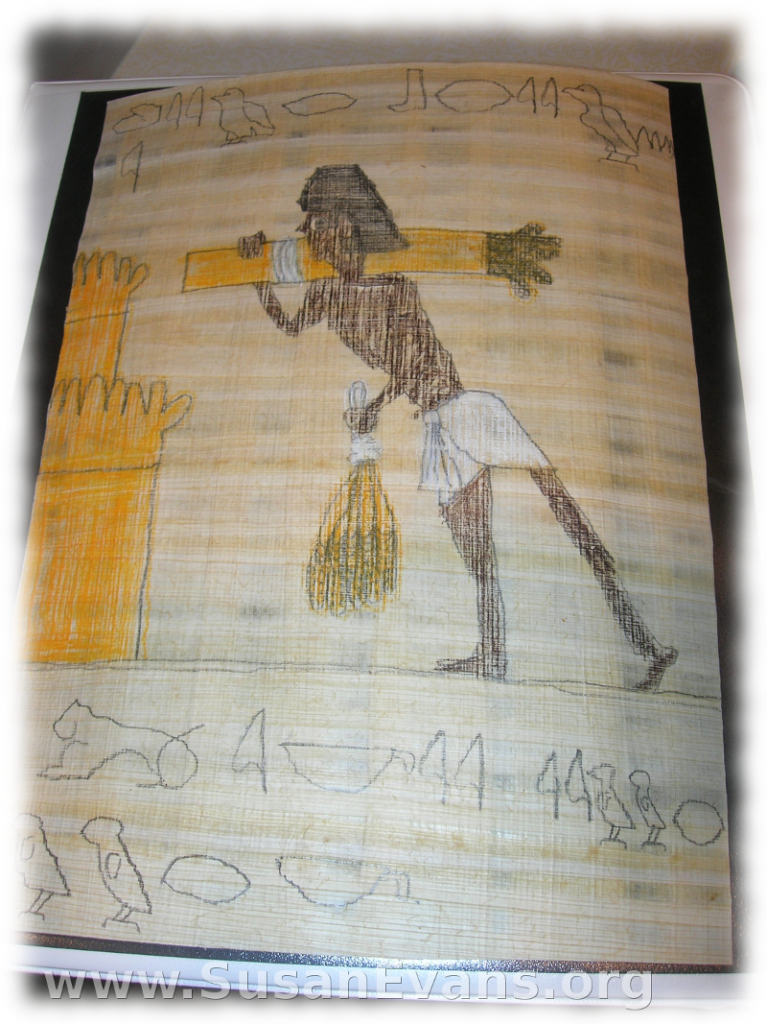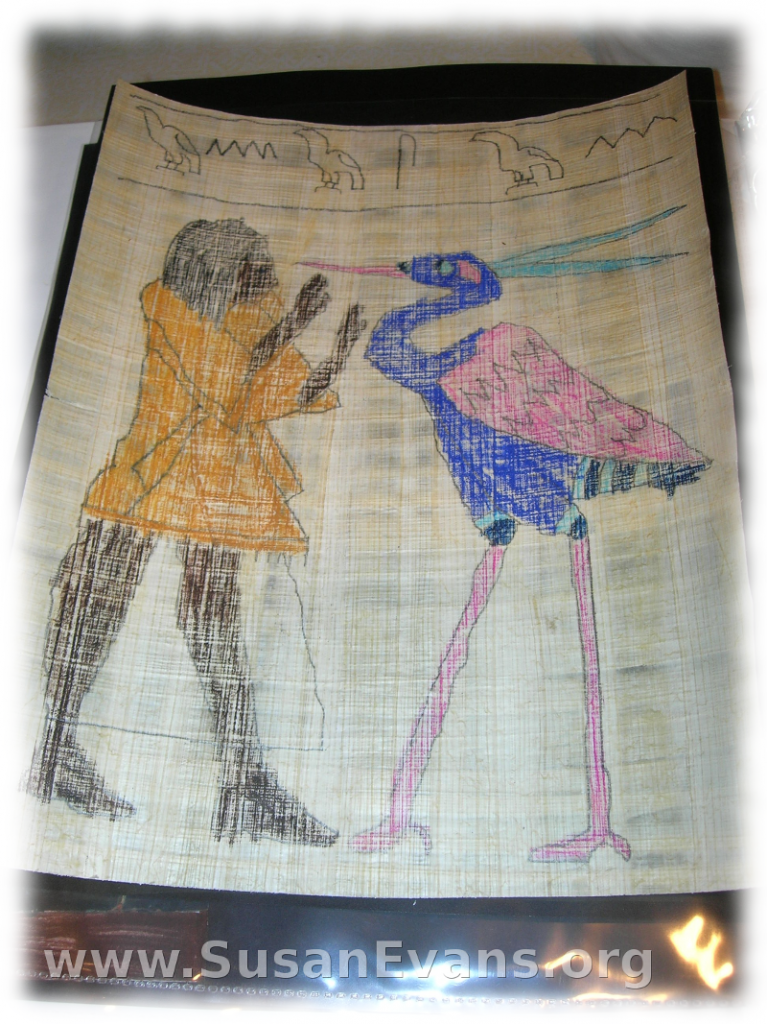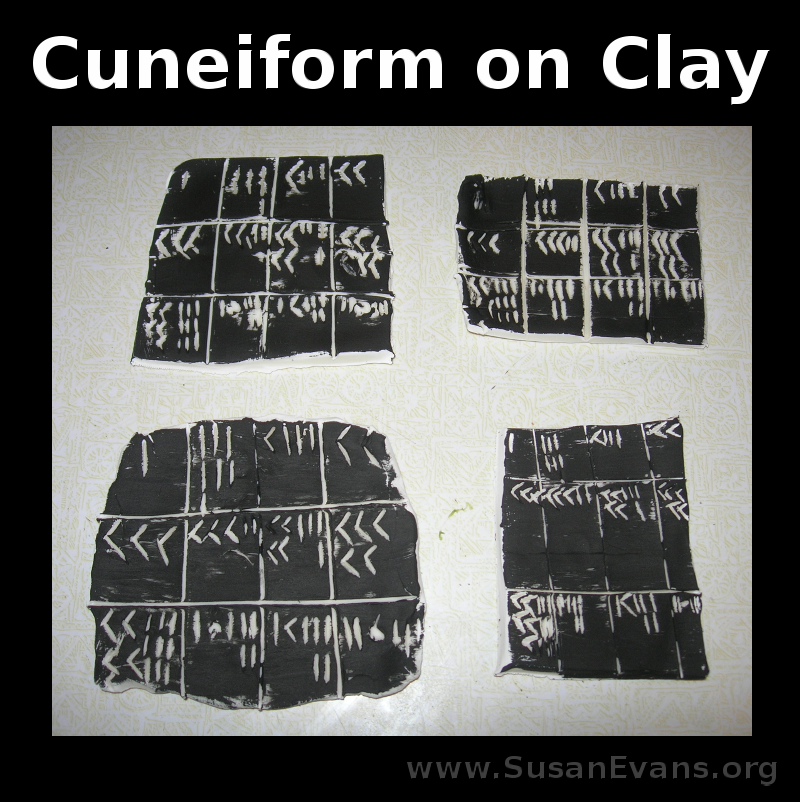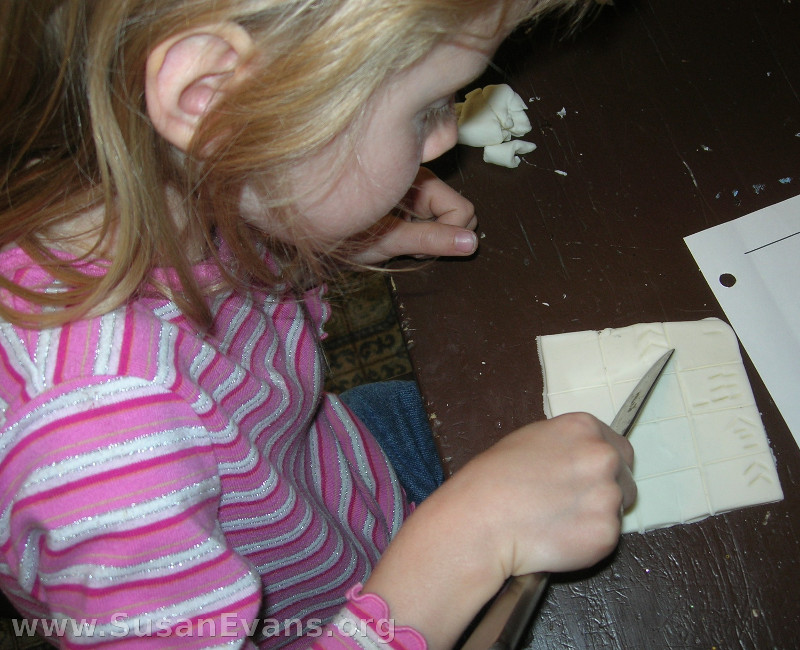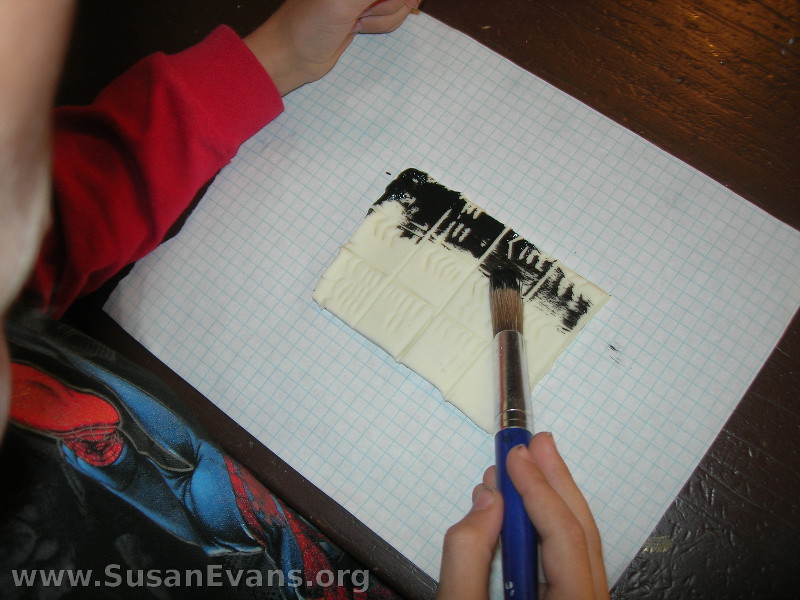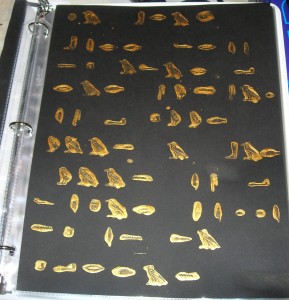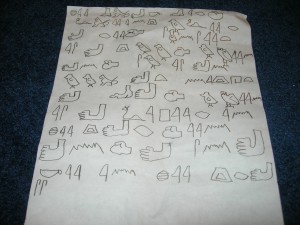I picked up a game about Egypt called “Egyptians” at a yard sale for $1 last summer. I thought, sure, why not? I was about to teach a unit on Ancient Egypt in the fall. So now we’ve played the game several times, and the children have enjoyed it. The game is for two to four players, and the age is 7 and up. There is a game board, and the players are represented by camels. The object of the game is to collect six pharaohs and entomb them in your pyramid. Tomb robbers can steal from your pyramid, so you’re never really safe until you’ve won.
You answer questions about Ancient Egypt and collect pharaohs as you land on certain squares on the board. I was surprised a week ago by how many questions my children could answer after just two weeks of studying Egypt. (They must be reading Ancient Egypt books in their free time, because I didn’t teach them the answers to some of those questions. That’s one good thing about having fun books lying around. It makes kids want to study on their own.)
The most dramatic (and loudest) part of the game is when pharaohs do battle. One player puts down three pharaoh cards (for example) and another player puts down three pharaoh cards. Both players roll a die to see who rolls the highest number. The person with the highest number gets all six cards. My daughter acquired a huge pack of pharaoh cards by participating in a lot of battles. It was uncanny how she always won those battles.
When four people play the game, it can take two hours, which was tedious to me. My older two sons played the game (just the two of them) before I had a chance to look at it, and they said the game was way shorter with fewer people.
